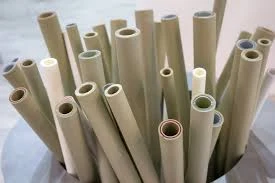
-
 Afrikaans
Afrikaans -
 Albanian
Albanian -
 Amharic
Amharic -
 Arabic
Arabic -
 Armenian
Armenian -
 Azerbaijani
Azerbaijani -
 Basque
Basque -
 Belarusian
Belarusian -
 Bengali
Bengali -
 Bosnian
Bosnian -
 Bulgarian
Bulgarian -
 Catalan
Catalan -
 Cebuano
Cebuano -
 China
China -
 China (Taiwan)
China (Taiwan) -
 Corsican
Corsican -
 Croatian
Croatian -
 Czech
Czech -
 Danish
Danish -
 Dutch
Dutch -
 English
English -
 Esperanto
Esperanto -
 Estonian
Estonian -
 Finnish
Finnish -
 French
French -
 Frisian
Frisian -
 Galician
Galician -
 Georgian
Georgian -
 German
German -
 Greek
Greek -
 Gujarati
Gujarati -
 Haitian Creole
Haitian Creole -
 hausa
hausa -
 hawaiian
hawaiian -
 Hebrew
Hebrew -
 Hindi
Hindi -
 Miao
Miao -
 Hungarian
Hungarian -
 Icelandic
Icelandic -
 igbo
igbo -
 Indonesian
Indonesian -
 irish
irish -
 Italian
Italian -
 Japanese
Japanese -
 Javanese
Javanese -
 Kannada
Kannada -
 kazakh
kazakh -
 Khmer
Khmer -
 Rwandese
Rwandese -
 Korean
Korean -
 Kurdish
Kurdish -
 Kyrgyz
Kyrgyz -
 Lao
Lao -
 Latin
Latin -
 Latvian
Latvian -
 Lithuanian
Lithuanian -
 Luxembourgish
Luxembourgish -
 Macedonian
Macedonian -
 Malgashi
Malgashi -
 Malay
Malay -
 Malayalam
Malayalam -
 Maltese
Maltese -
 Maori
Maori -
 Marathi
Marathi -
 Mongolian
Mongolian -
 Myanmar
Myanmar -
 Nepali
Nepali -
 Norwegian
Norwegian -
 Norwegian
Norwegian -
 Occitan
Occitan -
 Pashto
Pashto -
 Persian
Persian -
 Polish
Polish -
 Portuguese
Portuguese -
 Punjabi
Punjabi -
 Romanian
Romanian -
 Russian
Russian -
 Samoan
Samoan -
 Scottish Gaelic
Scottish Gaelic -
 Serbian
Serbian -
 Sesotho
Sesotho -
 Shona
Shona -
 Sindhi
Sindhi -
 Sinhala
Sinhala -
 Slovak
Slovak -
 Slovenian
Slovenian -
 Somali
Somali -
 Spanish
Spanish -
 Sundanese
Sundanese -
 Swahili
Swahili -
 Swedish
Swedish -
 Tagalog
Tagalog -
 Tajik
Tajik -
 Tamil
Tamil -
 Tatar
Tatar -
 Telugu
Telugu -
 Thai
Thai -
 Turkish
Turkish -
 Turkmen
Turkmen -
 Ukrainian
Ukrainian -
 Urdu
Urdu -
 Uighur
Uighur -
 Uzbek
Uzbek -
 Vietnamese
Vietnamese -
 Welsh
Welsh -
 Bantu
Bantu -
 Yiddish
Yiddish -
 Yoruba
Yoruba -
 Zulu
Zulu
fiberglass sand pipe
Fiberglass Sand Pipe A Sustainable Solution for Modern Infrastructure
In the ever-evolving landscape of construction and infrastructure, materials that promise durability and sustainability are highly sought after. Among these materials, fiberglass sand pipes have emerged as a powerful solution, revolutionizing the way we approach piping systems in various applications.
What is Fiberglass Sand Pipe?
Fiberglass sand pipes are composite pipes made from a combination of fiberglass strands and sand, reinforced to create a lightweight yet robust product. This innovative material offers significant advantages over traditional piping solutions, which often use metals or PVC. The incorporation of fiberglass technology allows for enhanced resistance to corrosion, chemical degradation, and extreme weather conditions, making these pipes ideal for diverse environments.
Advantages of Fiberglass Sand Pipes
1. Durability One of the standout features of fiberglass sand pipes is their exceptional durability. They are resistant to both chemical and environmental stressors, which translates to a longer lifespan compared to conventional materials. This longevity not only reduces the need for frequent replacements but also minimizes maintenance costs over time.
2. Lightweight The lightweight nature of fiberglass sand pipes simplifies transportation and installation. Workers can handle the pipes easily, reducing labor costs and time needed for installation. The reduced weight also means that less structural support is required, further streamlining construction processes.
fiberglass sand pipe

3. Corrosion Resistance Unlike traditional metal pipes, fiberglass sand pipes do not corrode when exposed to moisture, chemicals, or harsh environmental conditions. This property makes them particularly suitable for applications in industries such as sewage, water treatment, and chemical processing, where the risk of corrosion can lead to significant failures and safety hazards.
4. Environmental Benefits As communities and industries strive for sustainability, fiberglass sand pipes align well with eco-friendly initiatives. The raw materials used in manufacturing these pipes can often be sourced sustainably, and their long service life reduces the overall demand for resources. Moreover, the end-of-life disposal of fiberglass sand pipes is more environmentally friendly compared to traditional materials, as they can be recycled or repurposed.
5. Cost-Effectiveness Although the initial investment in fiberglass sand pipes may be higher than traditional options, the long-term savings due to reduced maintenance, installation costs, and extended lifespan render them a cost-effective choice. Organizations are increasingly recognizing the value of investing in durable solutions that pay off over time.
Applications
Fiberglass sand pipes find applications in a multitude of sectors, including municipal water supply, wastewater management, mining, and oil and gas industries. Their adaptability allows them to meet the specific needs of various projects while maintaining high performance standards.
Conclusion
As the construction industry continues to seek innovative and sustainable materials, fiberglass sand pipes are at the forefront of this movement. Their unique combination of durability, lightweight nature, and resistance to corrosion positions them as a reliable choice for modern infrastructure. Investing in fiberglass sand pipes is not just a step toward more resilient piping systems but also a commitment to sustainability and efficiency in construction practices. With these pipelines, the future of infrastructure looks both strong and environmentally friendly.
Latest news
-
Exploring the Benefits of Top Hammer Drifter Rods for Enhanced Drilling PerformanceNewsJun.10,2025
-
High-Precision Fiberglass Winding Machine for GRP/FRP Pipe Production – Reliable & Efficient SolutionsNewsJun.10,2025
-
FRP Pipes & Fittings for Shipbuilding - Corrosion-Resistant & LightweightNewsJun.09,2025
-
Premium FRP Flooring Solutions Durable & Slip-ResistantNewsJun.09,2025
-
Premium Fiberglass Rectangular Tanks Durable & Lightweight SolutionNewsJun.09,2025
-
Tapered Drill String Design Guide Durable Performance & UsesNewsJun.09,2025









